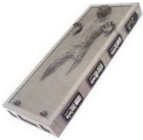CP/M (Control Program for Microcomputers) was a mass-market operating system created for Intel 8080/85 based microcomputers by Gary Kildall of Digital Research, Inc. The Digital Research sold version supported the Intel 8080 Development System. CP/M was the first operating system for microcomputers.
Author Sir Harold Evans wrote that Microsoft DOS inventor Tim Paterson relied heavily on an existing OS called CP/M created by programmer Gary Kildall, supporting the claim that Microsoft's First OS Was Stolen. Microsoft used DOS to make billions in sales and pave the way for the Windows operating system.
Without CP/M there would have been no DOS (Disk Operating System) and likely leaving Microsoft as only a briefly existing company in the footnotes of the personal computer. Bill Gates seems owes everything to the tragic creator of CP/M, Gary Kildall.
Gary Kindall maintained that QDOS, and subsequently MS-DOS, had been directly copied from CP/M and thus infringed on his copyright. Kindall died July 11, 1994 receiving no compensation from Gates or Microsoft for DOS.
CP/M for the Microcomputer
| Carbonite Page: This page is an archived entry and should not be modified. Information on this page may be out of date, however, still useful. An example is data for legacy systems or outdated technologies that are still being used by some, such as Vacuum Tube bogey values, analog broadcast television frequencies or MS-DOS 6.22 commands. Although outdated, this information will not change or evolve any further. Certain archived pages on the D.U.C.K. Wiki have been imported from our older ANSI BBS system and other storage mediums previously used. These pages are kept unmodified for archival purposes. |
CP/M, sold by Digital Research, Inc. of Pacific Grove, California, is very different from other software. For one thing it isn't written for any particular system. There are versions currently available for most of the popular small computers.
CP/M is also different in that it carries a substantial cost. It sells for $100 direct from Digital Research, and a version for the TRS-80 is priced at $150 from FMG Corporation. Lifeboat Associates of New York offers versions for many computers. Their price is $145.
While large corporations are accustomed to spending hundreds or thousands of dollars on software, small computer users have come to expect quite a bit for software in the above $100 category. They get it in CP/M. It is a major piece of software that not only provides the user with an expanded, more powerful operating system, it also serves as the foundation for many other programs. Language processors for BASIC, FORTRAN, and COBOL as well as application programs like word processors, data bases, and payroll software have been written for CP/M. These programs use the general purpose software routines incorporated in CP/M to reduce the amount of work that must be done to get a program written, debugged, and on the market. Tailoring applications software to CP/M rather than a particular computer also expands the population of potential purchasers. To the user, having CP/M means being less dependent on the manufacturer of the computer for applications software since most programs written for CP/M can be run on any computer that has CP/M.
CP/M requires a disk system and a substantial amount of memory to be used most effectively. CP/M is thus not part of a typical small system for home use, but an increasing number of businesses are buying disk based systems and CP/M. Such a combination, while priced well above the cost of entry level systems, is very competitive with the minicomputer alternatives that do the same jobs in a business environment. The manuals for CP/M are several hundred pages long. CP/M is composed of several subcomponents that do a particular job:
- Console Command Processor
- Basic Disk Operating System
- Editor
- Peripheral Interface Program
- Dynamic Debugging Tool
Console Command Processor
CCP is part of the real world interface for the system. It is what the user talks to, and it in turn directs some of the activities of other subcomponents. CCP also has built-in routines to handle input and output from peripherals like printers and a CRT.
